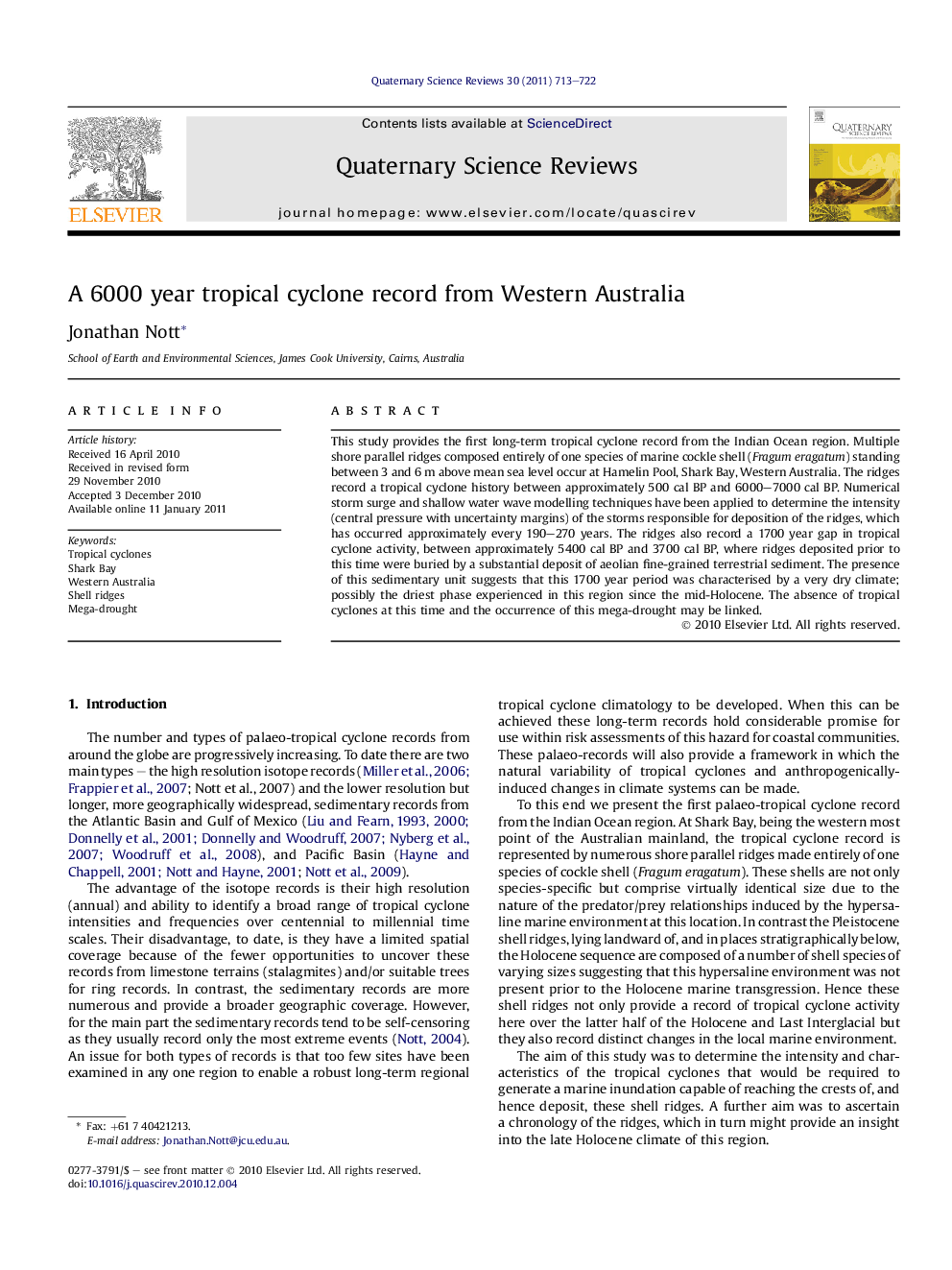| Article ID | Journal | Published Year | Pages | File Type |
|---|---|---|---|---|
| 4736979 | Quaternary Science Reviews | 2011 | 10 Pages |
This study provides the first long-term tropical cyclone record from the Indian Ocean region. Multiple shore parallel ridges composed entirely of one species of marine cockle shell (Fragum eragatum) standing between 3 and 6 m above mean sea level occur at Hamelin Pool, Shark Bay, Western Australia. The ridges record a tropical cyclone history between approximately 500 cal BP and 6000–7000 cal BP. Numerical storm surge and shallow water wave modelling techniques have been applied to determine the intensity (central pressure with uncertainty margins) of the storms responsible for deposition of the ridges, which has occurred approximately every 190–270 years. The ridges also record a 1700 year gap in tropical cyclone activity, between approximately 5400 cal BP and 3700 cal BP, where ridges deposited prior to this time were buried by a substantial deposit of aeolian fine-grained terrestrial sediment. The presence of this sedimentary unit suggests that this 1700 year period was characterised by a very dry climate; possibly the driest phase experienced in this region since the mid-Holocene. The absence of tropical cyclones at this time and the occurrence of this mega-drought may be linked.
Research highlights► We provide the first long-term tropical cyclone record from the Indian Ocean. ► Severe tropical cyclones have struck Shark Bay Western Australia every 200 years. ► There was a major gap in tropical cyclone activity between 5,400 and 3,700 cal BP. ► The 1700 year gap was likely due to a much drier climatic regime or mega-drought.
